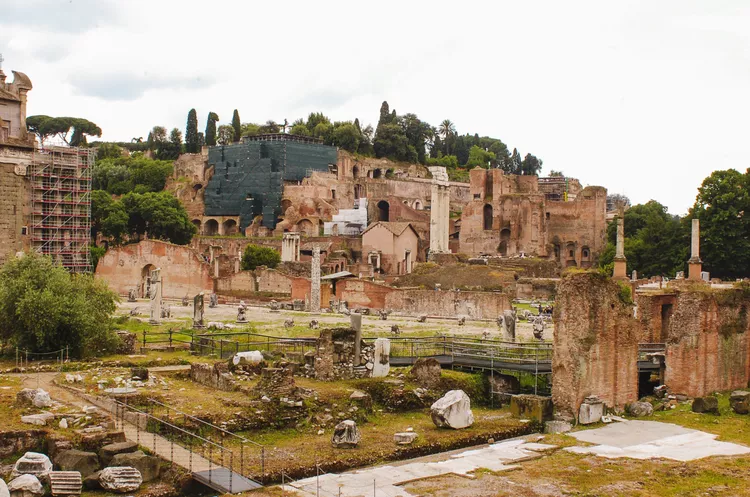The Roman Forum: A Glimpse into Ancient Rome
The Roman Forum (also known as the Foro Romano in Italian, or just the Forum) stands as one of the Top Ancient Sites in Rome and a must-see for visitors. Nestled between the Colosseum, Capitoline Hill, and the storied Palatine Hill, the Forum served as the center of political, religious, and commercial activity in ancient Rome, providing profound insights into the illustrious history of the Roman Empire. Additionally, the Via dei Fori Imperiali, a wide boulevard constructed during Mussolini’s reign in the early 20th century, forms the eastern edge of this historical site.
Roman Forum Visitor Information
Hours: Daily from 8:30 am to one hour before sunset; closed on January 1, May 1, and December 25.
Location: Via della Salaria Vecchia, 5/6. Metro Colosseo stop (Linea B)
Admission: The current ticket price is €12, which includes access to the Colosseum and Palatine Hill. To enhance your experience, you may avoid waiting in long lines by securing tickets in advance.
Information: You can check current hours and prices online or purchase tickets in euros, including applicable fees.
Moreover, consider visiting the Roman Forum with the Roma Pass, a cumulative ticket offering free or discounted entry to over 40 attractions, along with complimentary transportation on Rome’s buses, subways, and trams.
The Forum houses numerous ancient structures, monuments, and ruins, offering a vivid portrayal of its historical significance. A map of the Forum is available at the entrance or from various kiosks throughout the city.
Roman Forum History
Construction within the Forum dates back to as early as the 7th century B.C. The northern area, near Capitoline Hill, features some of the oldest ruins, including marble remnants from the Basilica Aemilia (a site of business in ancient Rome); the Curia, where Roman senators convened; and the Rostra, a platform for early speechmakers, established in the 5th century B.C.
By the 1st century B.C., as Rome expanded its influence over the Mediterranean and much of Europe, various structures arose in the Forum. Notable constructions include the Temple of Saturn and the Tabularium, the state archives (accessible via the Capitoline Museums), both built around 78 B.C. Moreover, Julius Caesar initiated the construction of the Basilica Julia, intended as a law court, in 54 B.C.
This pattern of construction and destruction persisted for hundreds of years, beginning with Augustus, Rome’s first emperor, in 27 B.C. and continuing through the 4th century A.D. when the Western Roman Empire fell to the Ostrogoths. Following this decline, the Forum descended into disrepair and obscurity. For centuries, it primarily served as a quarry for construction elsewhere in Rome, including the walls of the Vatican and numerous churches. It was not until the late 18th century that the Roman Forum was rediscovered and scientifically excavated. Even now, archaeologists continue their work in the Forum, hoping to unveil additional priceless fragments from antiquity.





